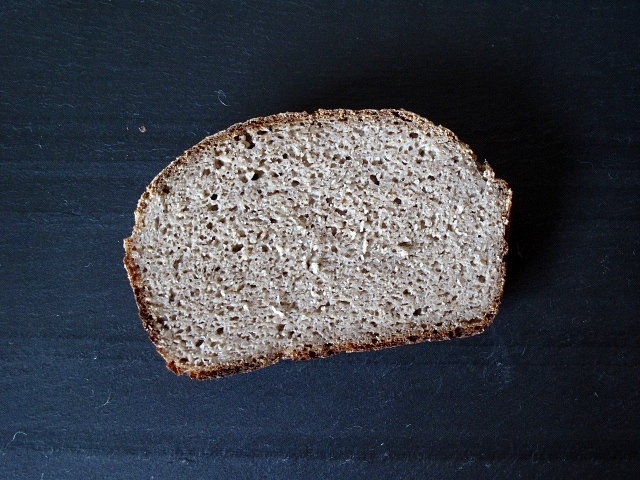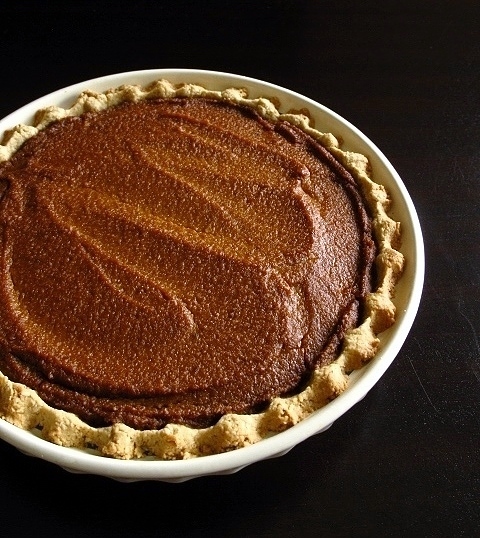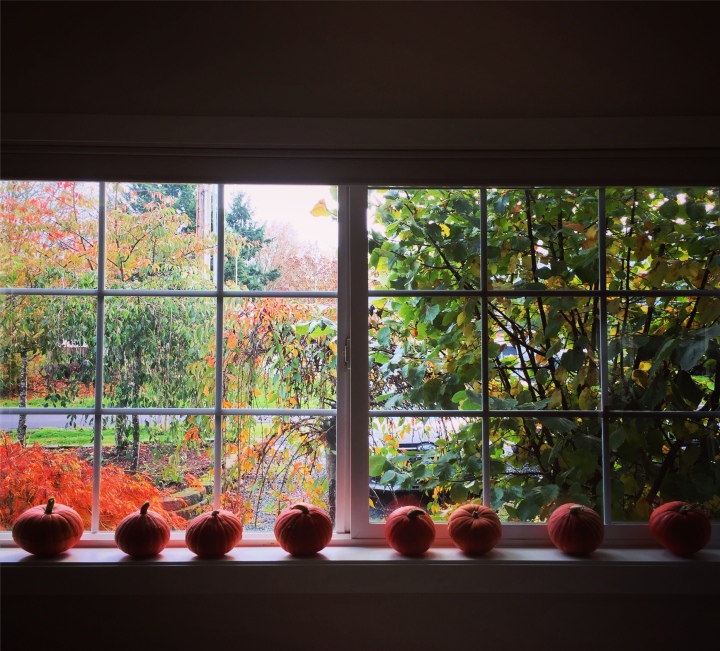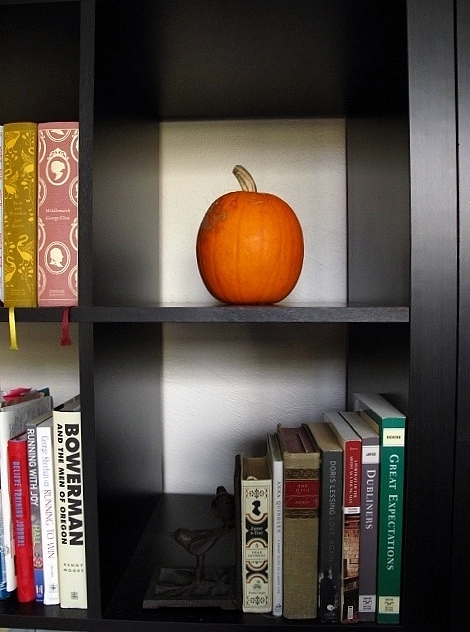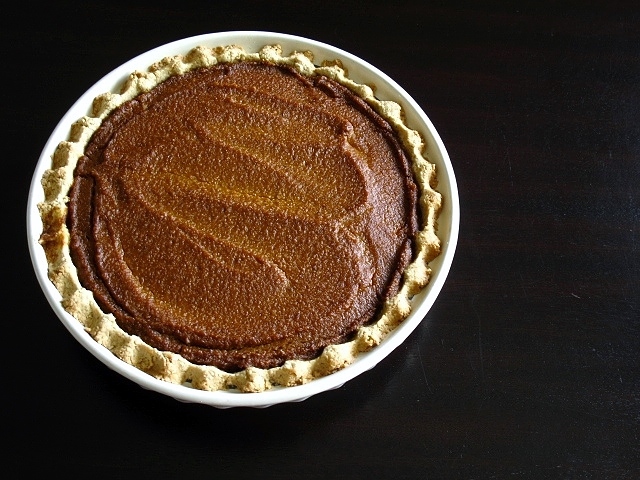
I’ve just made it past the halfway point of my last fall term in nutrition grad school. I’ve been working with clients in clinic these past few weeks, experiencing all that I’ve learned in the last couple years come together in practice, and enjoying it so incredibly much. Getting to the clinical work has reinforced why I’ve spent so much of my energy on this career shift endeavor when I get to sit with someone and offer even a little bit of individualized support.
In addition to nutritional recommendations, I also give interventions that address balance from a whole systems perspective which is in line with the integrative and holistic approach to my program. This often means I try to emphasize stress reduction and relaxation practices. On the closer to home front, I’ve been trying to take some of my own advice and incorporate downtime each day for relaxing my system, an intention I constantly struggle with. Inevitably I often forego the rest I need and end up in the kitchen instead. My only excuse is it’s pumpkin season– and I find baking quite restorative!

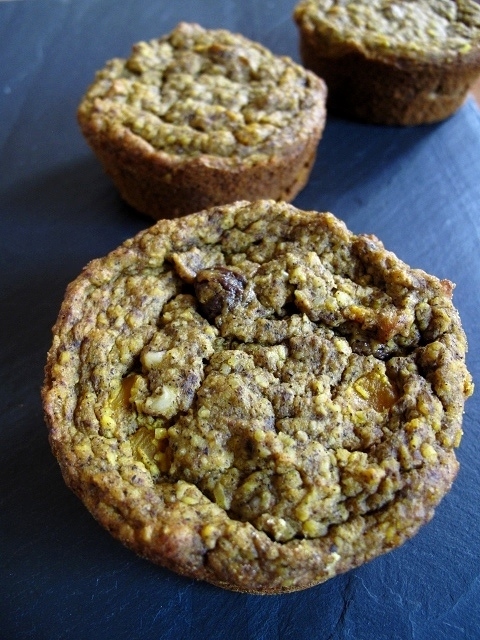
Since it is pumpkin and winter squash season, The Recipe Redux theme this month is Fresh from the Pumpkin Patch. We’ve had a string of mostly gorgeous days so far but once this fall season finally and truly sunk in, I began cooking lots of very autumn appropriate Ayurvedic recipes from Kate O’Donnell’s Everyday Ayurveda Cooking for a Calm, Clear Mind. Nutritionally, the recipes are helping rebalance my system after a rough end-of-summer transition. The first portion of the book is all about the Sattvic lifestyle in Ayurveda–a way of life I’ve been gleaning more from as time goes on and I notice how I fare better with less stimulating foods, practices, and experiences.
These muffins are a deviation from a recipe in the cookbook. If you’re a runner and a fan of the Run Fast Eat Slow superhero muffins, they’re also quite similar, but I’ve upped the emphasis on using walnuts and flax since they both are rich in omega 3’s which are an essential fatty acid that most of us need more of.

Pumpkin Ginger Oatmeal Muffins, makes 4 large muffins or 6 regular size
recipe updated: 2/18/2024
Even though I adapted these fairly dramatically, they do stay true to their ayurvedic roots. They are delicious as is but there are also many variations depending on what you’ve got on hand:
1) instead of ground walnuts, use almond flour 2) instead of pumpkin, use 1/2 cup applesauce and 1 medium chopped apple or other fruit and flavor combos. 3) instead of coconut sugar use pure maple syrup 4) instead of spices, add 1/2 Tbs. pumpkin pie spice and 1/4 tsp. turmeric
1 1/2 Tbs. ground flax seeds
4 1/2 Tbs. water
3/4 cup / 60 g raw walnuts, ground
1/2 cup + 2 Tbs. / 75 gr oat flour (can be made from oatmeal)
1/2 cup / 50 gr oatmeal
1/4 cup / 50 gr organic cane sugar
1/4 tsp. salt
1/4 tsp. ground turmeric
3/4 tsp. cinnamon
pinch of cloves
1/2 tsp. baking soda
1 tsp. baking powder
pinch of ground black pepper
2 Tbs. / 25 gr coconut oil, melted
1 cup / 220 gr pumpkin, pureed or mashed
1 Tbs. / 3 g minced fresh ginger
1/4 cup / 35 gr raisins
1/4-1/2 cup water or nut milk, as needed.
- Preheat oven to 350 degrees F. Line muffin tins with baking cups or oil and flour them.
- In a medium bowl, whisk together the ground chia seeds and water. Let this stand for 5 minutes. In a separate bowl, mix the ground walnuts, oat bran and oats, salt, turmeric, baking soda, and baking powder.
- Add the coconut sugar, pumpkin puree, and coconut oil to the chia seed mixture and stir until well combined. Stir in the ginger and the raisins.
- Add the dry ingredients to the wet and mix until it just comes together. If the batter seems a touch dry, add water or nut milk just until it becomes a touch looser, but only add up to 1/2 cup, as they won’t need much. This step largely depends on how much moisture content your pumpkin puree has in it.
- Divide into the muffin cups and bake for 25 to 30 minutes, or until they are golden brown and a toothpick in the middle comes out clean.



